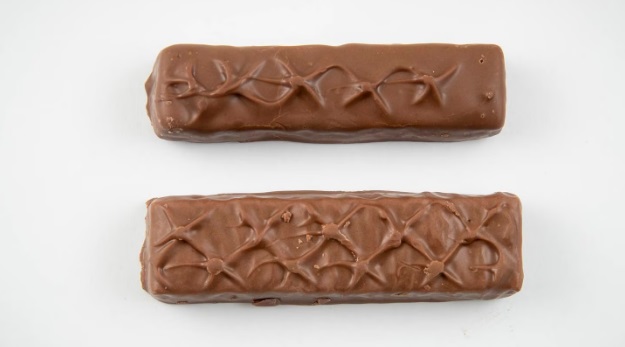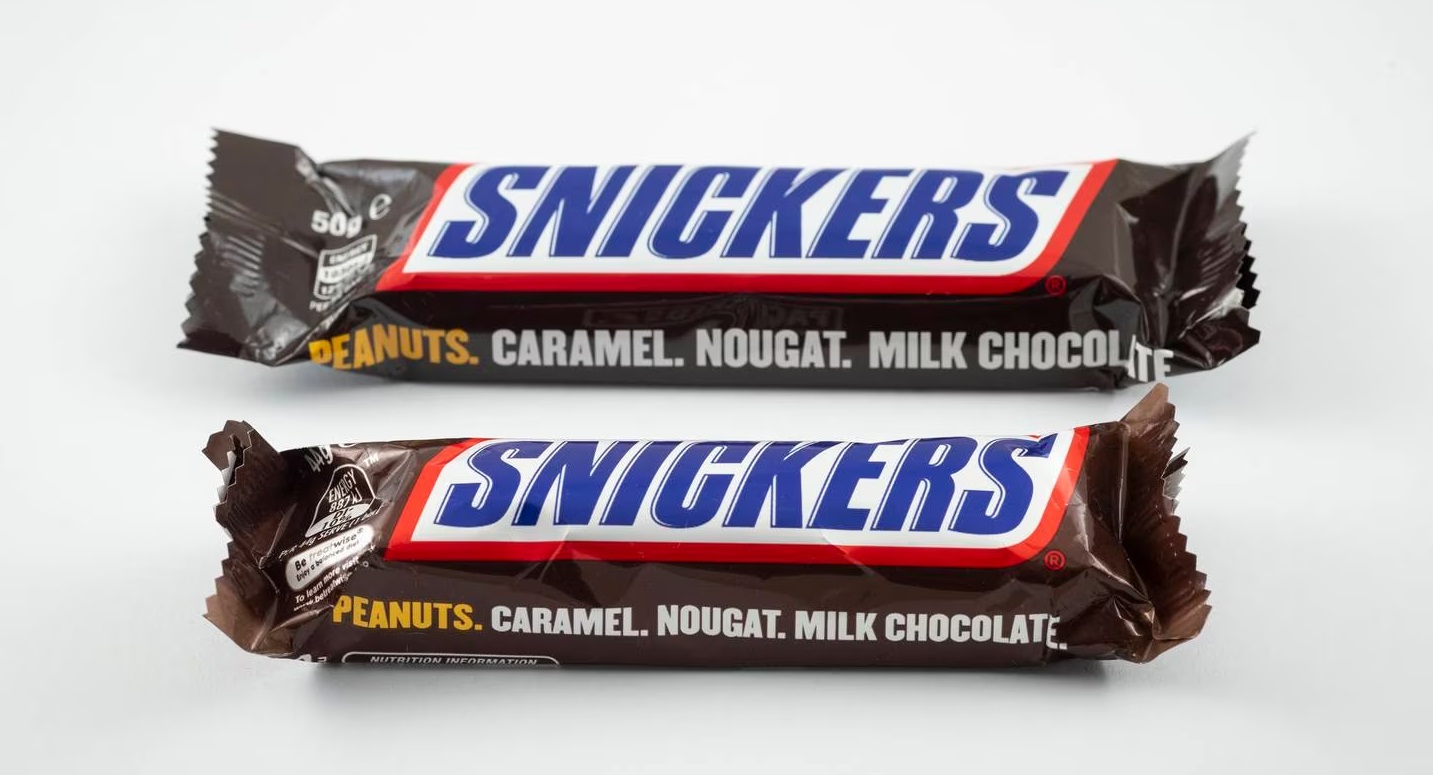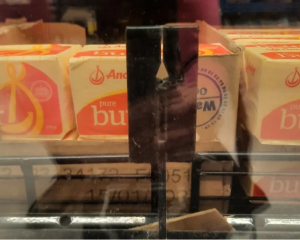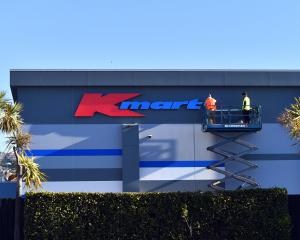
The peanutty bar has been downsized from 50g to 44g - about a bite missing per bar.
The 12 percent reduction means the chocolate is noticeably smaller than its chunkier predecessor - but still the same price.
Well-known for the advertising slogan “Snickers really satisfies”, the 44g bar is already on shelves in New Zealand.
Some stores are still selling the 50g bar but only until stock runs out.
One disappointed customer realised only after leaving the store that the size had changed.
“Snickers is my go-to snack so I noticed as soon as I opened it that it was a lot smaller,” they said.
“I checked the label to see if it was a normal bar because it seemed so much lighter.”
Pak ‘n Save Glen Innes had the 50g bar for $1.09 but Pak ‘n Save Albany only had the 44g bar in stock for $1.55. Several New World stores around Auckland had sold out of the bigger size.

Store owners spoken to by The New Zealand Herald were unaware of the size reduction.
“I had no idea. We were not told at all, it is a bit sneaky for sure,” one said.
Mars New Zealand confirmed the new size and blamed rising costs.
“Like many businesses, we are facing unprecedented cost pressures right across our operations, driven by a range of external factors,” a spokeswoman said.
“While we continue to absorb cost increases, changes to product weight is sometimes necessary to ensure we can continue to supply our much-loved chocolate bars to New Zealand consumers.”
The spokeswoman also said manufacturing had recently moved back to Australia from China.
“We temporarily moved the production of Snickers to another Mars Wrigley factory within our global network while we invested in new technology and factory updates at our Ballarat, Victoria manufacturing site,” she said.
The factory also produces Maltesers, M&Ms, and Pods; the spokeswoman did not say if any other chocolate treats were in for a size reduction.
Other manufacturers have also chosen to reduce portions of their products rather than raise the price for customers.
Gemma Rasmussen at Consumer NZ said “shrinkflation” was alive and well across New Zealand with popular items such as ice cream, cheese, orange juice, toilet paper, shampoo and chocolate bars reducing in size.
“Finding out a loved chocolate bar has shrunken in size but remains the same price is not great news for shoppers. However with global pressures on food supply, labour, and manufacturing, we could see more shrinkage across the aisles,” she said.
Rasmussen said there had been public outcry over portion size reduction in the past, such as when Cadbury confirmed New Zealanders would be eating smaller “family blocks”, citing rising ingredients costs.
The retail price remained the same while the block was reduced by 20g.
Rasmussen said popular Griffin’s biscuits Chocolate Thins got even thinner in 2019, going from 200g to 180g with the company citing “operational costs”.
Other examples that year included Pascall lollies, with jet planes, wine gums and jubes being cut by 25 percent, from 240g packets to 180g packets, with the price only dropping by 15 percent, from $3.29 to $2.79.
And New Zealanders were outraged when Cadbury chopped marshmallow eggs in half, replacing the old egg-shaped style where two halves were joined together, creating a crunchy chocolate layer in the middle.
Customers fumed online calling the new half-eggs “rocks” and “humps”.
Rasmussen said companies should communicate size changes to their customers through their websites or social media channels.
“If the size of a product has reduced in size and the price remains the same, the company has a responsibility to communicate this to consumers and ensure that it’s not misleading,” she said.
Consumer suggested customers keen to check product sizing should shop by unit price and look at the price per 100ml or 100g. This was displayed beneath the price tag at the supermarket as well as on the product page when shopping online.
“By understanding the pricing of items at 100g or 100ml, you’ll notice a sharp increase in price if that sizing changes, but the price remains the same.
“Manufacturers also have a responsibility to tell you, so if in doubt, reach out to them.”












